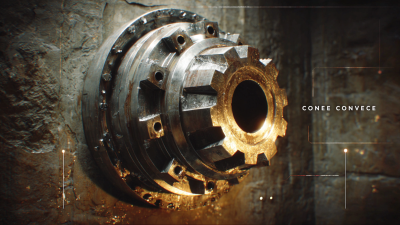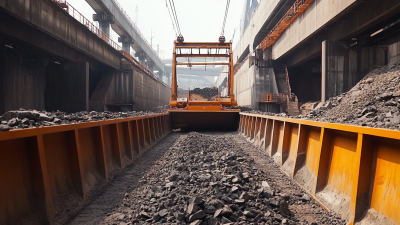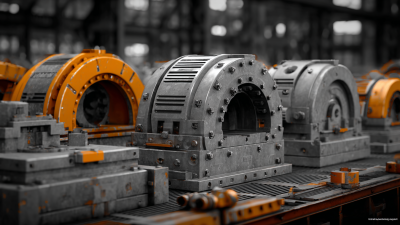In the ever-evolving landscape of modern mining operations, the importance of equipment efficiency cannot be overstated. One critical component that significantly impacts the performance of crushing equipment is the Cone Crusher Concave. According to Dr. John Smith, a renowned expert in mining technology, "The design and quality of cone crusher concaves directly influence both the efficiency and the product quality in mineral processing." His insights emphasize that an optimized concave can lead to enhanced operational productivity, reduced wear, and improved throughput.

As mining operations strive for greater productivity and cost-effectiveness, understanding the role of Cone Crusher Concaves becomes essential. These components not only facilitate the crushing process but also contribute to the overall performance of the cone crusher itself. By focusing on material selection, design improvements, and maintenance strategies, mining professionals can leverage the potential of cone crusher concaves to achieve optimal results in their operations.
This article explores the intricate relationship between Cone Crusher Concaves and modern mining efficiency, providing valuable tips on maximizing their performance and extending their lifespan. Through empirical data and expert analysis, we aim to shed light on best practices that can lead to significant advancements in mining operations.
The cone crusher concave plays a pivotal role in modern mining operations, significantly impacting the efficiency and effectiveness of the crushing process. According to a report by Grand View Research, the global cone crusher market is expected to reach USD 2.95 billion by 2025, driven by the rising demand for aggregates and minerals. The concave's design allows for a more controlled and precise fragmentation of materials, which ultimately leads to improved yield and reduced energy consumption during the crushing process.
Furthermore, a study published by Research and Markets highlights that optimal wear materials in the concave can enhance the lifespan of the crusher components by up to 25%. This durability not only minimizes downtime for maintenance but also reduces operational costs. As mining operations strive for sustainability and greater efficiency, the cone crusher concave's ability to facilitate better material flow and reduce excess wear can significantly contribute to these goals, emphasizing its critical importance in crushing processes across the industry.
| Parameter | Description | Importance |
|---|---|---|
| Material Type | Different rocks and ores processed | Affects concave design and wear rate |
| Concave Profile | Shape that affects crushing efficiency | Optimizes size reduction |
| Material Composition | Alloy materials used for durability | Prolongs lifecycle and reduces downtime |
| Wear Rate | Rate at which concave wears during use | Cost implications and maintenance scheduling |
| Crushing Capacity | Maximum amount of material processed | Direct correlation with efficiency |
| Setting Adjustment | Adjustable distance between concave and mantle | Allows for optimizing product shape |
The manufacturing of cone crusher concaves involves the selection of high-quality materials that can withstand the demands of modern mining operations. Typically, these concaves are made from a combination of alloys and wear-resistant steel, designed to offer both durability and performance under extreme conditions. For instance, manganese steel is commonly used due to its excellent toughness and ability to harden while in use, making it ideal for high-friction environments typical in mining activities.
In addition to manganese, some manufacturers incorporate chromium and molybdenum in the alloy formulation to enhance strength and impact resistance. The careful selection of these materials not only prolongs the lifespan of the concave but also improves the efficiency of the crushing process. As mining operations become increasingly focused on maximizing productivity and minimizing downtime, the role of quality materials in the manufacturing of cone crusher concaves cannot be overstated. The effective combination of these elements contributes significantly to the overall performance and reliability of the equipment in harsh mining conditions.
The efficiency of modern mining operations heavily relies on various equipment components, with the cone crusher concave being a pivotal element. According to a report by Technavio, the global mining equipment market is projected to grow at a CAGR of 6% from 2021 to 2025, driven by trends to enhance operational efficiency.
Concaves in cone crushers play a crucial role in this efficiency by directly influencing the quality and size of the crushed material. The shape and configuration of the concave chambers can significantly affect the crushing force and the distribution of material, ultimately leading to improved throughput and recovery rates.
Additionally, a study from the Journal of Mining Science indicates that optimizing the design and material properties of concaves can lead to a reduction in energy consumption by up to 15%. This optimization not only increases the lifespan of the crusher but also minimizes operational costs, offering a sustainable solution in a resource-intensive sector. With advancements in materials science and engineering, the development of high-performance concaves has become essential to meet the increasing demands for efficiency and sustainability in mining operations.
In modern mining operations, the cone crusher concave plays a crucial role in the effective reduction of material size. The performance and lifespan of the concave directly affect the overall productivity and efficiency of the crushing process. To prolong the life of the cone crusher concave, implementing proper maintenance practices is essential.
Regular inspections can help identify wear and tear early, enabling timely replacements and minimizing unexpected downtime.
Tips for maintaining your cone crusher concave include monitoring the wear pattern and adjusting the crushing parameters as necessary. Regularly check the alignment of the concave and the mantle to prevent uneven wear, which can lead to decreased performance. Additionally, ensure that the lubrication system is functioning properly, as adequate lubrication reduces friction and wear, ultimately extending the life of the concave.
Moreover, using high-quality materials for both the concave and the mantle significantly influences longevity. It is advisable to source components from reputable manufacturers who adhere to industry standards. By following these maintenance practices and tips, mining operations can enhance the durability of cone crusher concaves, leading to increased operational efficiency and reduced costs.
The design and functionality of cone crushers have been significantly enhanced by innovative technologies, elevating their role in modern mining operations. One of the leading advancements is the integration of advanced materials in the construction of concaves, which are essential components for crushing. According to a recent report by the Global Mining Equipment Market, the use of high-strength alloys and composite materials can improve the lifecycle of the concave up to 25%, thereby reducing the frequency of replacements and maintenance costs for operators.
Moreover, the implementation of smart technology in cone crusher design is revolutionizing the way these machines operate. Features such as digital monitoring and automated adjustment systems allow for real-time performance analysis and condition-based maintenance. A study published by the International Journal of Mining Science & Technology indicates that mines utilizing such technology observe a 15% increase in operational efficiency and reduce energy consumption significantly. This shift towards intelligent design not only enhances productivity but also addresses sustainability by minimizing waste and maximizing resource extraction efficiency in mining operations.









